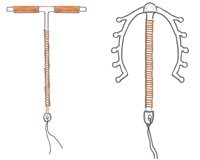An article on: Cost of IUD in Kenya + Cost of coil contraception in Kenya, IUD removal cost in Kenya, Coil family planning price in Kenya.
Family Planning are contraceptive methods which allows women and families control the number of children they have, intervals between birth, and control unintended pregnancies.
“The capacity to enjoy and control sexual and reproductive behaviour is a key element of…sexual health” (WHO 1992).
The above being said, all women of childbearing age, have a right to contraceptives, and it is their choice to choose to use it.
There are different contraceptive methods:
1. Hormonal methods, consisting of pills, injectables, subdermal implants IUD (Intrauterine devices). It consists of the Intrauterine copper device (commonly used in Africa) and the progestogen-releasing IUD called hormonal IUCD.

2. Barrier methods, consisting of Condoms, female condoms, diaphragm, spermicides creams, jellies, etc.
3. Fertility awareness methods, which includes all family planning methods based on identification of fertile time.
Includes: Billings/ovulation method, basal body waking temperature, Cervical palpitation
Calendar calculation
Symptothermal
Lactational amenorrhea….
Coitus Interruptus.
Male and Female Sterilisation method.
The above is a basic insight on what contraceptive/family planning methods look like.
Women, especially women of childbearing age need to know that it is their basic human rights to have access to the above.
Cost of IUD in Kenya + Cost of coil contraception in Kenya
Talking about IUD, it costs about Ksh 2500 – Ksh 3,000 for IUD including the insertion and subsequent followup to check if it is in place. IUD provides contraceptive cover for up to 10 years. There is the Lydia IUD, copper IUD, and Mirena IUD. THE HORMONAL IUD IS MORE EXPENSIVE COMPARED TO COPPER IUD WHICH IS CHEAP AND AFFORDABLE. THE PRICES OF IUD IN KENYA AND CITIES LIKE NAIROBI DO VARY.
Meanwhile, IUD removal cost in Kenya is around Ksh 250 shillings.
The common side effects of IUD include:
Side effects associated with Mirena (hormonal) IUD include:
Headache.
Acne.
Breast tenderness.
Irregular bleeding, which can improve after six months of use.
Mood changes.
Cramping or pelvic pain.
possible pelvic inflammatory disease.
Apart from risk of pelvic inflammatory disease dislodgement into the abdominal cavity and copper toxicity or copper allergy, copper IUCD does not have the above side effects.
Credit: Ijay RN, MSN for www.nimedhealth.com.ng




















